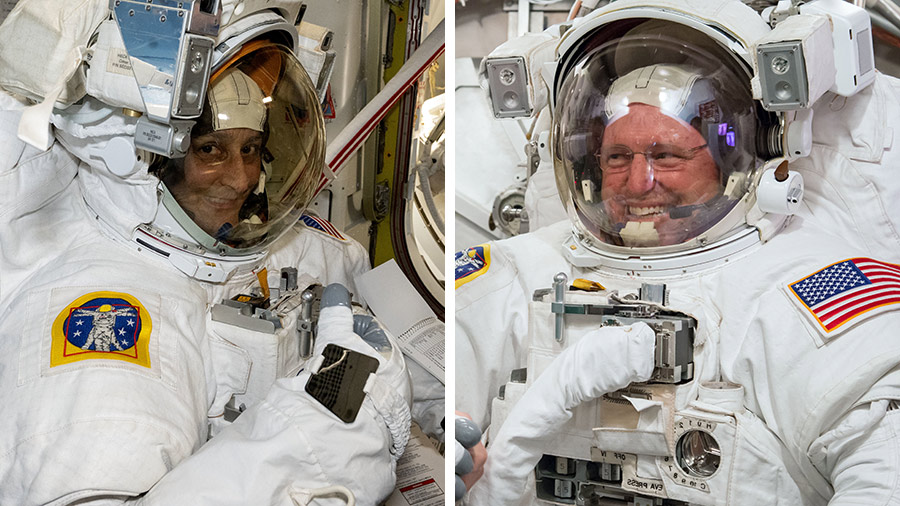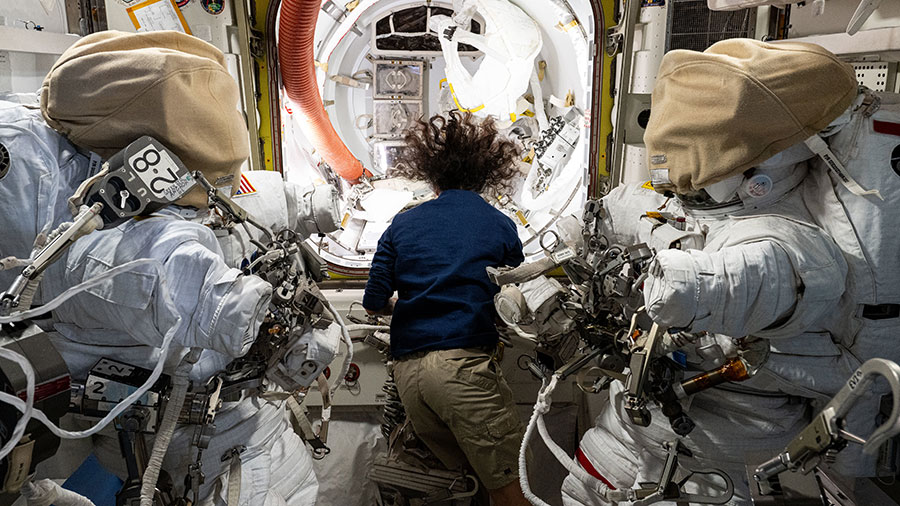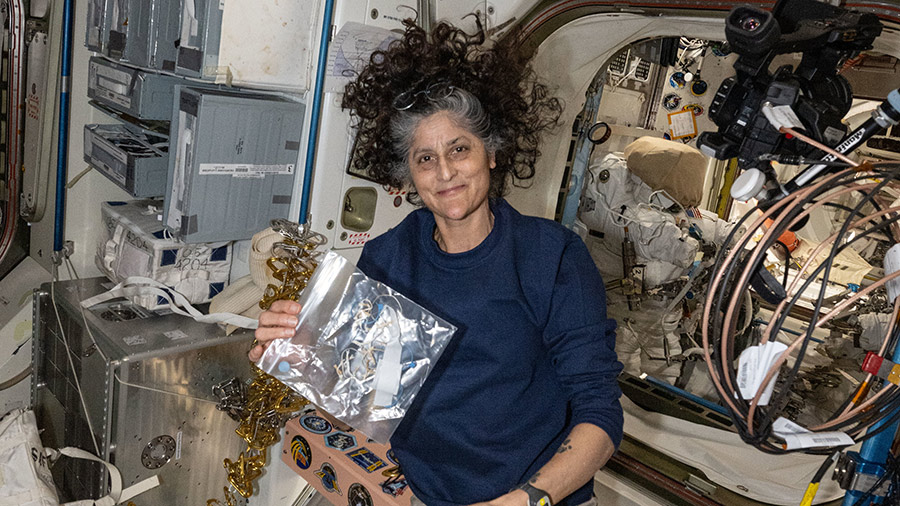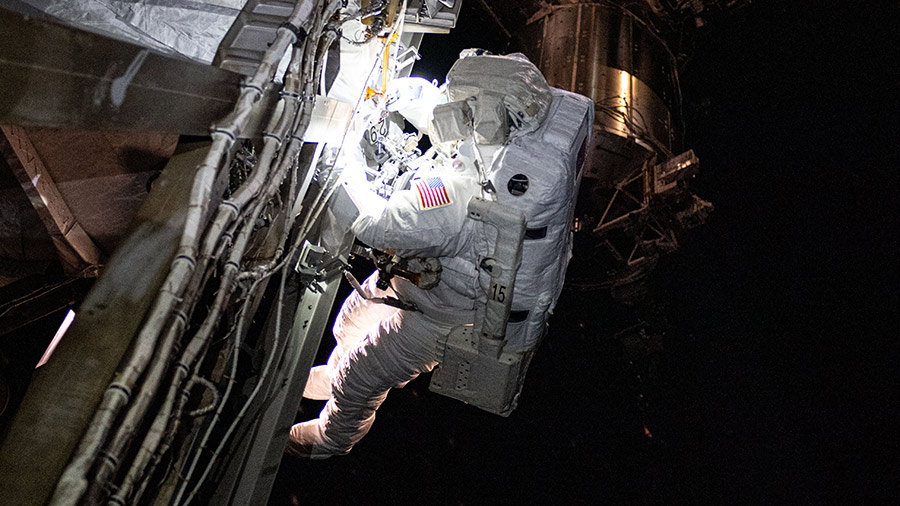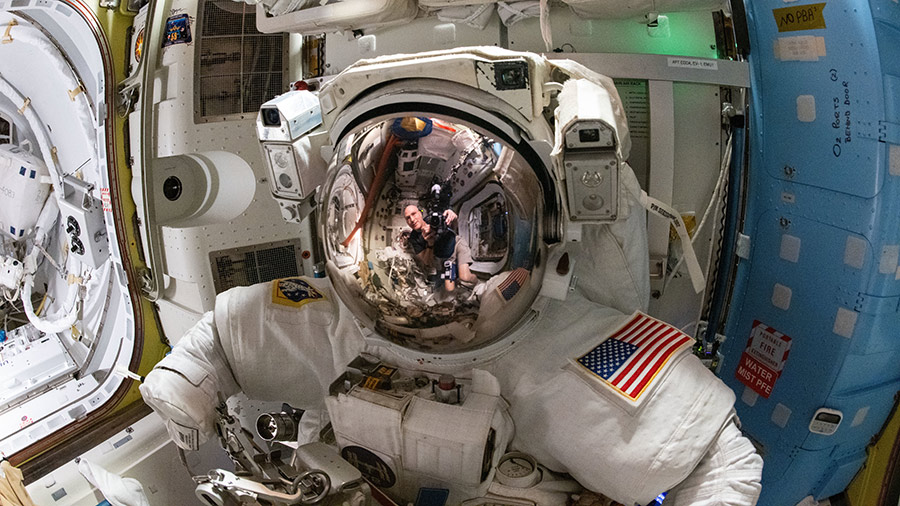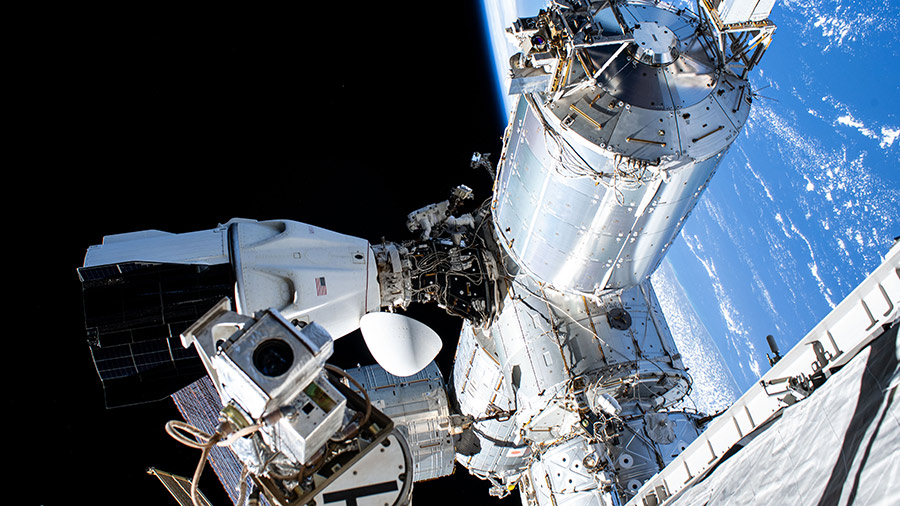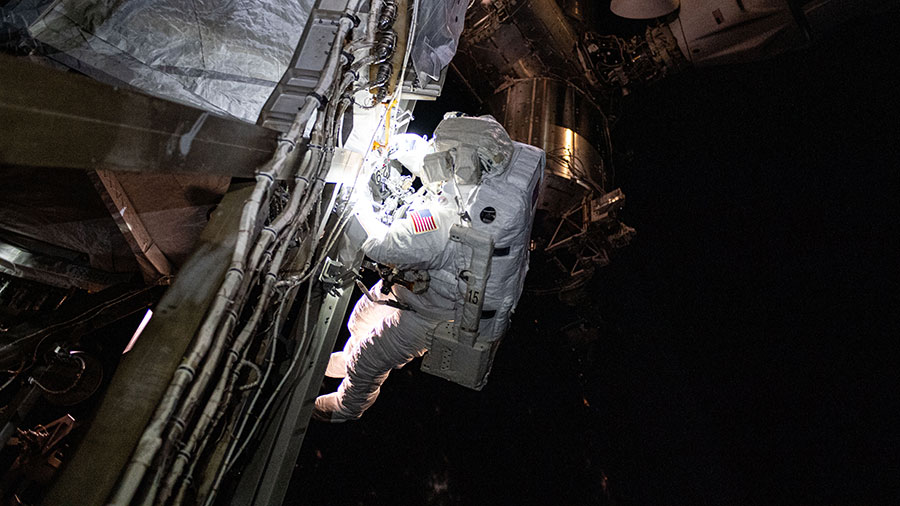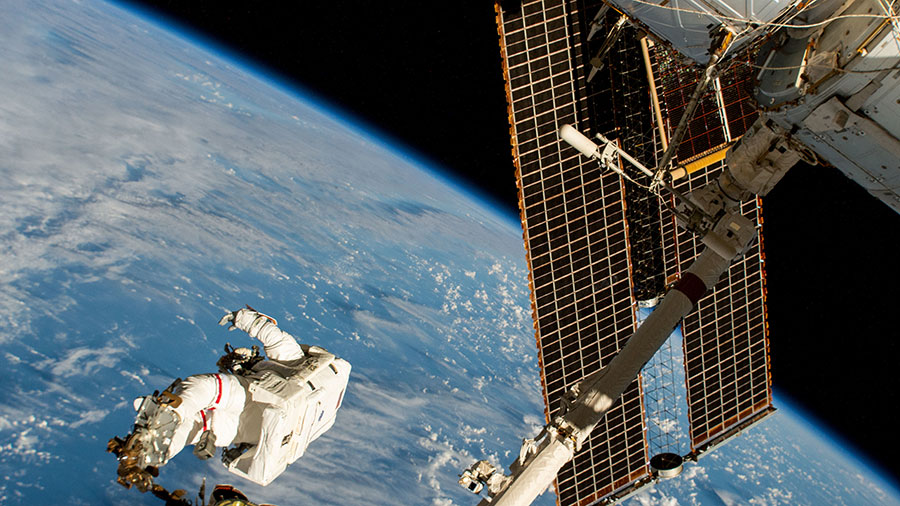
Two spacewalkers and their assisting crew members took a half-day off on Friday following the previous day’s excursion to remove radio hardware and swab for microbes outside the International Space Station. The rest of the Expedition 72 crew researched plasma physics, took a physical fitness test, and ensured the upkeep of the orbital outpost.
Station Commander Suni Williams and Flight Engineer Butch Wilmore took Friday morning off sleeping in after conducting a five-hour and 26-minute spacewalk on Thursday. The duo worked in the vacuum of space removing a radio frequency group assembly and collecting samples of potential microbes living on the outside of the station for analysis. During that same spacewalk Williams surpassed Peggy Whitson’s record for most total spacewalking time by a female of 60 hours and 21 minutes. Williams now has 62 hours, 6 minutes of total spacewalk time, fourth on NASA’s all-time list.
Williams and Wilmore then spent Friday afternoon servicing their spacesuits and cleaning the Quest airlock where they staged Thursday’s spacewalk. At the end of the workday, the pair was joined by NASA Flight Engineers Nick Hague and Don Pettit for a standard conference with mission controllers discussing issues or concerns they may have experienced during the spacewalk. Hague and Pettit, the day before, had assisted the spacewalkers in and out of their spacesuits and operated the Canadarm2 robotic arm.
Williams total spacewalking time is now 62 hours and six minutes over nine spacewalks. Wilmore has completed five spacewalks reaching 31 hours and two minutes of total spacewalking time.
Expedition 72’s other three crewmates, Roscosmos Flight Engineers Aleksandr Gorbunov, Alexey Ovchinin, and Ivan Vagner, had a busy day studying space physics, pedaling on an exercise cycle, and installing new electronics gear.
Gorbunov reviewed operations for the Plasma Kristall-4 experiment that observes the behavior of complex plasmas in microgravity. The plasmas contain electrons, ions, neutral gas, and microparticles that interact strongly when charged and can turn into plasma crystals. Next, he installed a video monitor in the Columbus laboratory module to support the plasma crystal study.
Ovchinin and Vagner started their day pedaling on an exercise cycle for an hour each while attached to sensors measuring their health data. The regularly scheduled fitness tests help researchers understand how microgravity affects a crew member’s body. The duo then spent the second half of their day continuing to install new command and telemetry gear inside the Zvezda service module.
Learn more about station activities by following the space station blog, @space_station and @ISS_Research on X, as well as the ISS Facebook and ISS Instagram accounts.
Get the latest from NASA delivered every week. Subscribe here: www.nasa.gov/subscribe


